Case Study
An Eneolithic Botai Culture Site, Kazakhstan
Archaeo-Physics, LLC was contracted by the Carnegie Museum of Natural History to perform a geophysical investigation of Krasnyi-Yar, an Eneolithic (Chalcolithic) Botai Culture site located in Northern Kazakhstan.
The objective of the investigation was to identify and map subsurface archaeological features using non-invasive prospection methods. Of particular interest was the identification of possible stockades or corrals, as these may provide evidence that Krasnyi Yar was a locus for early horse domestication. The geophysical data collected during this investigation will be used to target specific archaeological features for excavation, and as primary data for the study of intra-site patterning at Krasnyi Yar.
The investigation consisted of electrical resistance and magnetic field gradient survey over 24,300 m2 of the site.
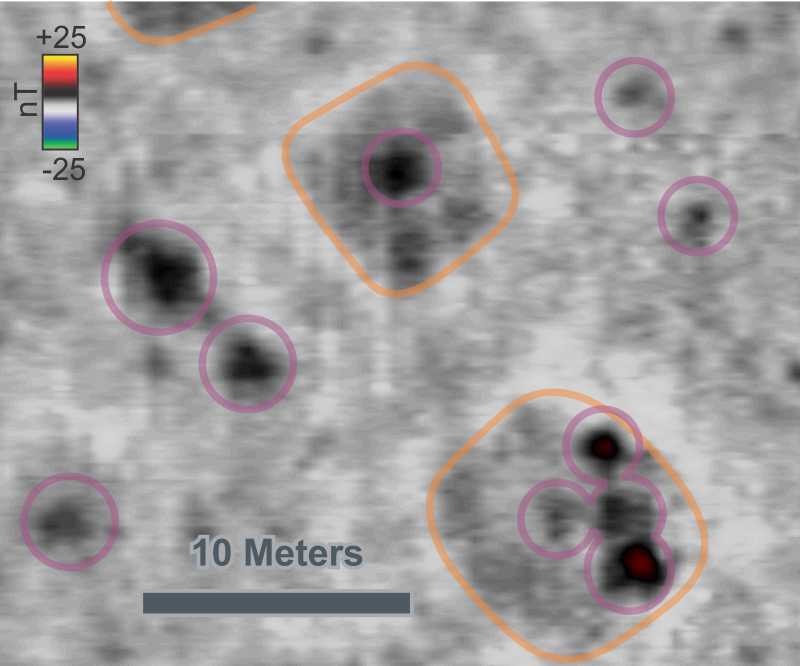
In this magnetic gradient map, pit houses (orange) and hearth or pit features (purple) are distinct and clearly patterned. 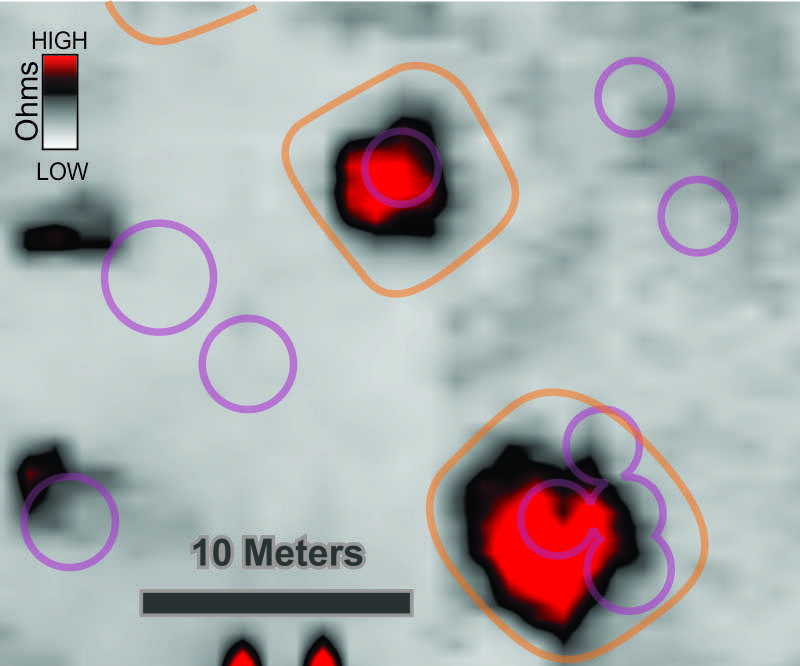
The electrical resistance survey shows clear expression of pit houses detected in the magnetic survey, but inconsistent expression of other features. These correlations offer clues about the physical composition of features.
Magnetic Field Gradient Survey
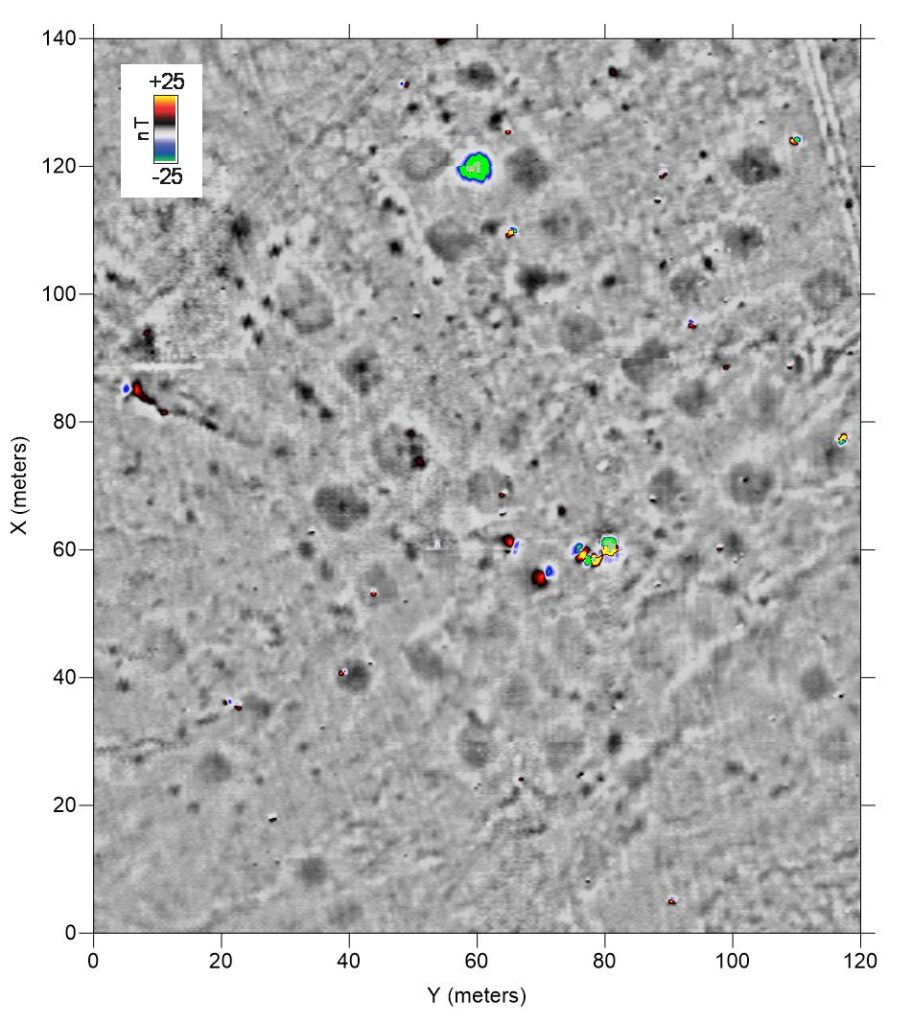
Numerous circular, rectangular, or square magnetic field gradient highs, 6-8m across, appear in the data that are thought to represent semi-subterranean pit house features. Most of these anomalies have a direct correlate in the electrical resistance survey results. This correlation significantly increases the degree of certainty of our interpretations. Many of these positive anomalies are bounded by linear field gradient lows. These lows may represent a building material composed of a lower susceptibility material, or they may simply be a non-cultural negative component of the complex induced magnetic field created by these archaeological features. Many of the magnetic anomalies interpreted as semi-subterranean pit house features possess an small internal, higher amplitude magnetic high. These may represent internal hearth features within the houses.
High-amplitude, short wavelength anomalies (generally in the red/blue range of the color scale) are visible in the magnetic data. Anomalies with these characteristics usually are created by modern ferrous iron debris at or close to the ground surface.
Numerous small circular magnetic field gradient highs are visible throughout the survey area. These anomalies often seem to appear in pairs, and are often clustered around the perimeter of the apparent semi-subterranean pit houses. These anomalies are interpreted to represent possible storage/refuse pits, burial pits, external hearth features, or similar features.
Many small circular magnetic field gradient highs may form alignments or patterns of significance. These anomalous patterns may represent the remains of structures external to the semi-subterranean pit houses such as corrals or stockades.
Electrical Resistance Survey
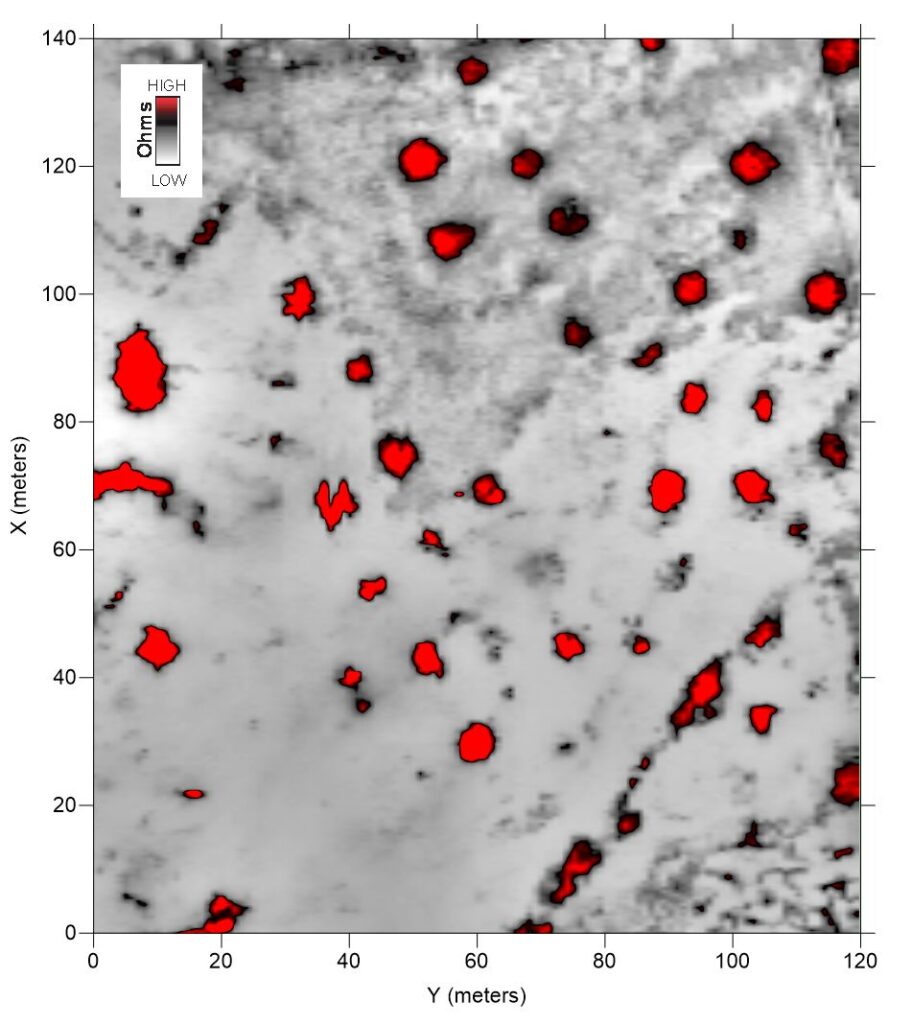
Numerous circular, rectangular, or square resistance highs (generally in the red range of the color scale) are thought to represent semi-subterranean pit house features. Most of these anomalies have a direct correlate in the magnetic field gradient results. This correlation significantly increases the degree of certainty of our interpretations.
A number of linear resistance anomalies (both high and low) appear in the data, particularly in the northern portion of the survey area, where less saturated soils were more favorable for resistance methods. These anomalies may represent the remains of structures external to houses such as corrals or stockades, or they may be natural in origin. Subsurface testing will allow more confident and detailed interpretation.
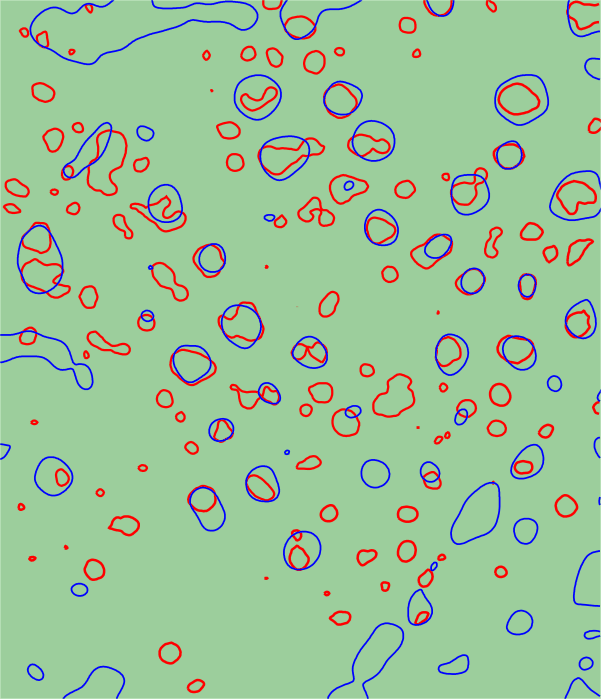
See also:
- Horse Domestication in the Botai Culture, Eneolithic Kazakhstan, University of Exeter, Department of Archaeology.
- Horsemen of the Steppes: Ancient Corrals Found in Kazakhstan, Scientific American.
- Horses were tamed a millennium earlier that previously thought, Los Angeles Times.
Principal Investigators:
Dr. Sandra Olsen (Carnegie Museum of Natural History)
Dr. Bruce Bradley (Pritech Inc. and the Smithsonian Institution)
Senior Associate: Dr. Alan Outram (University of Exeter)
Reference:
Olsen, S., Bradley, B., Maki, D. and Outram, A. (2006) Community organization among Copper Age sedentary horse pastoralists of Kazakhstan. In D. Peterson , L. M. Popova and A.T. Smith (ed.) Beyond the Steppe and the Sown: Proceedings of the 2002 University of Chicago Conference on Eurasian Archaeology. Leiden: Brill, pp89-111.
This investigation was sponsored the National Science Foundation (grant # BCS-9816476).
